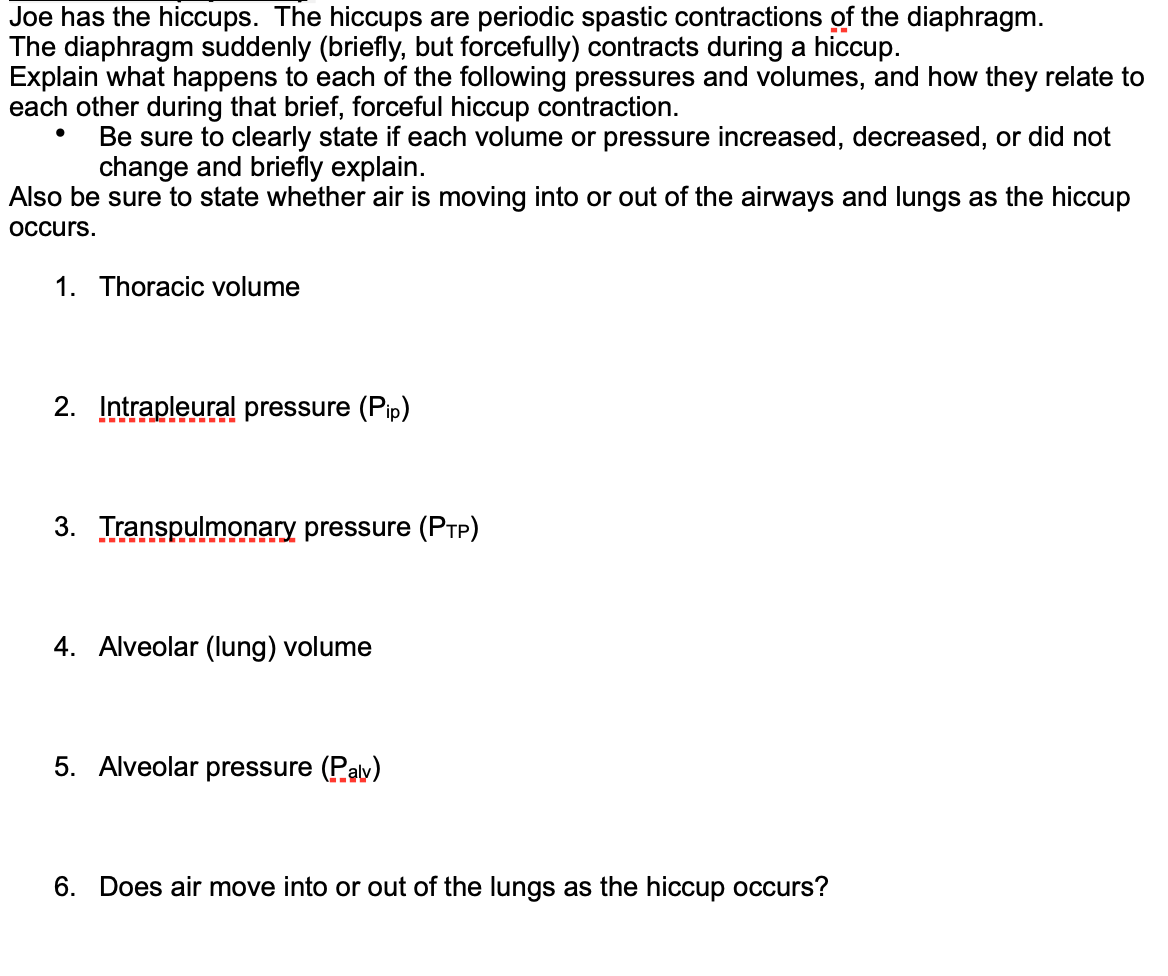Joe has the hiccups. The hiccups are periodic spastic contractions of the diaphragm. The diaphragm suddenly (briefly, but forcefully) contracts during a hiccup. Explain what happens to each of the following pressures and volumes, and how they relate to each other during that brief, forceful hiccup contraction. Be sure to clearly state if each volume or pressure increased, decreased, or did not change and briefly explain. Also be sure to state whether air is moving into or out of the airways and lungs as the hiccup Occurs. 1. Thoracic volume 2. Intrapleural pressure (Pip) 3. Transpulmonary pressure (Ptp) 4. Alveolar (lung) volume 5. Alveolar pressure (Palv) 6. Does air move into or out of the lungs as the hiccup occurs?
Musculoskeletal System
The musculoskeletal system, also called the locomotor system, is an organ system that gives humans and animals the ability to move using their muscular and skeletal systems. It provides stability, form, support, and movement to the body. The skeleton is composed of bones (skeleton), muscles, cartilage, tendons, ligaments, joints, and other connective tissue that supports and binds tissues and organs together. The musculoskeletal system is subdivided into two broad systems, such as the muscular system and the skeletal system.
Skeletal structure
The skeletal system is the core framework of the human body. The skeletal structure comprises bones and connective tissue, including cartilage, ligaments, and tendons. The skeletal structure of our body acts as a support structure. It maintains the body's shape and is responsible for its movement, blood cell formation, protection of organs, and mineral storage. The skeletal system is referred to as the musculoskeletal system.
Please read the prompt and answer sub-questions 4, 5, and 6

Trending now
This is a popular solution!
Step by step
Solved in 3 steps









